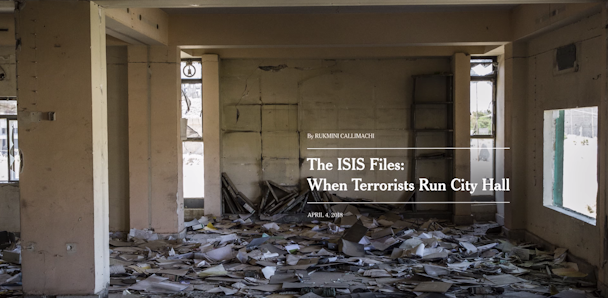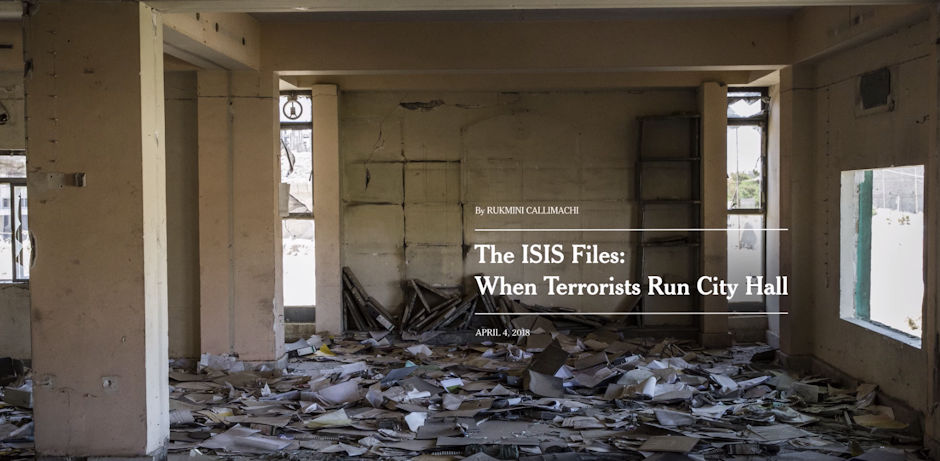Latest ‘Truth’ film from The New York Times shows the hunt for the Islamic State
The New York Times has been on a marketing push to promote the integrity of its journalists and its journalism. With a series of campaign films, ‘The Truth is Worth It,’ the media outlet has centered on the thought that “the truth doesn’t report itself.”

'Fearlessness' from The New York Times
The latest film in the series furthers the idea that you need a journalist with drive to bring the truth to light. ‘Fearlessness’ shows the lengths that one of its journalists – Rukmini Callimachi – goes to uncover the truth about the Islamic State, despite the increasing dangers and threats that stand in her way.
The film follows Callimachi’s search for global terrorism and the caliphate of the Islamic State, exploring the constant risk, fearlessness and instinct she requires to follow the truth from home soil to warzones, through threatening situations, developing sources and gathering information across the globe.
The style of the film, like the others in the series, follows a sped-up timeline. While it’s only two minutes in length, the viewer feels both the excitement and the tedium of Callimachi’s search, from finding a defector from the Islamic State to multiple trips to Iraq, including dangerous trips to the frontlines and spending the night on a roof as gunfire whizzed around, to times when the trail went cold and the story stalled. Through jarring POV clips to the clacking with dynamic type updates, the viewer is drawn into Callimachi’s world as she finally discovers the truth.
“Like so many of the stories from 'The Truth is Worth It' campaign, this was one of the richest and one of the most loaded subject matters, so it was a good one to try to tell," said Laurie Howell and Toby Treyer-Evans, creative directors at Droga5.
"The footage is mainly taken from the journalists’ (Callimachi's and the photographers’) phones; she’d filmed a lot of her trips to and from Iraq, so it was a case of poring through her footage and creating a story from it in combination with mixed media, artifacts and other shots we created. The audio was built from her real audio recordings in the field as the foundation, and then in the sound design, we looked to bring in more sounds and sound effects to make it really feel like you were with her along the way.”
The evolving type technique reflects the psychology and thought process of The New York Times journalist – deliberately written in headline case, it changes, moves, deletes and rewrites as it mimics the journalists’ journeys as they chase the truth. The twists and turns of the footage and type ultimately fall into place to make up the final headline that was originally run by The New York Times.
Callimachi would be one of the first people to a site to get information after Iraqi forces had cleared the site. She visited more than 150 sites, scouring each area for documents, files and any other clues. A piece of information from her translator led to a key discovery of files that were found in a nondescript briefcase, which was captured among the rubble of a destroyed building in the last square mile of ISIS-controlled Western Mosul. The resulting story, ‘The ISIS Files: When Terrorists Run City Hall’ ran April 4, 2018.
“The entire process was very collaborative, with sign-off by Rukmini herself on the accuracy of the narrative and the timeline. It starts with reading the article and then a series of interviews with Rukmini as we write and rewrite in the connected style, reducing and reducing to get to the most revealing story points. The style of the writing is that of a rewriting headline, so that also forces you to make it more succinct. We then collect all the assets and jump into the edit — there, things change; bits are reduced further and we finally show Rukmini the edit to make sure we have the facts all buttoned up,” said Howell and Treyer-Evans.
Content created with:

The New York Times
Find out more
Droga5
Droga5 is a New York City-based global advertising agency with an additional office in London. The agency works across all platforms including, broadcast, print,...
Find out more

